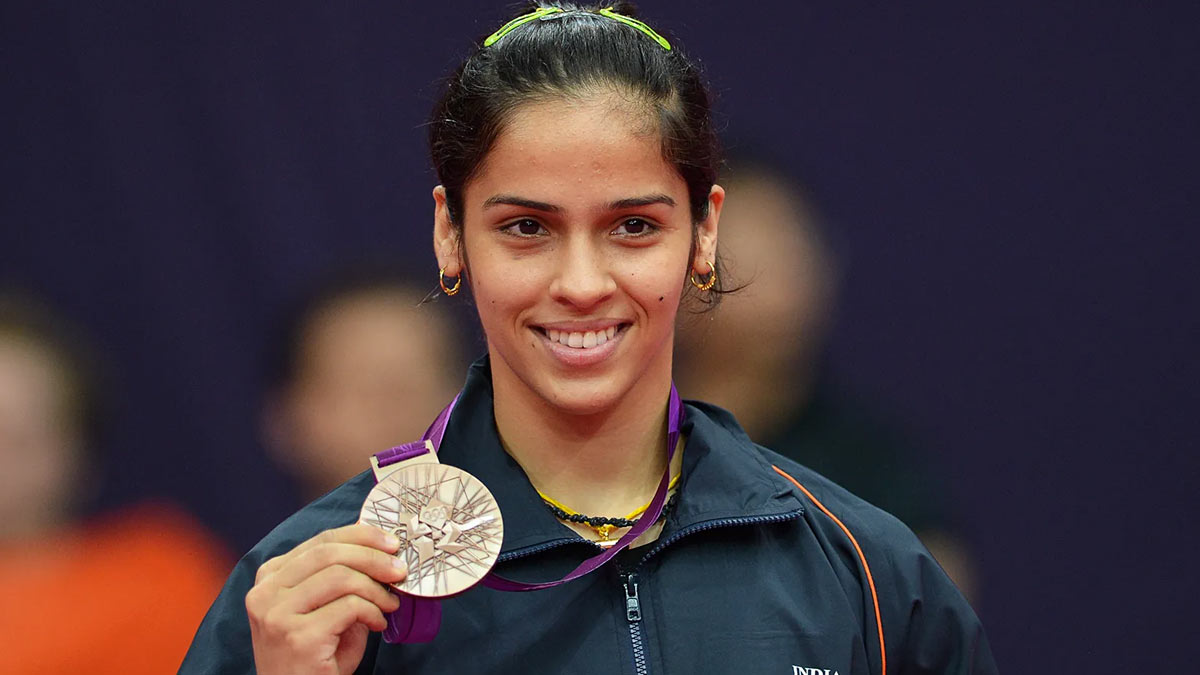
Saina Nehwal, a trailblazing Indian badminton player, recently revealed that her professional journey may be nearing an end due to a chronic health issue. Speaking on the *House of Glory* podcast, she opened up about battling arthritis in her knees. This unexpected news not only sheds light on her personal struggle but also highlights the rising prevalence of arthritis among younger individuals.
Table of Content:-
Saina Nehwal’s Struggle with Arthritis
Saina, a gold medalist at the 2010 and 2018 Commonwealth Games, shared that her knees have deteriorated to the point where she is finding it difficult to train for her usual eight to nine hours a day. "The knee is not very good. I have arthritis. My cartilage has gone to a bad state. It is very difficult to push for eight-nine hours,” she said. As her training hours dwindle to just two per day, Saina hinted that her illustrious career may be nearing its final chapter. Her candid admission of living with arthritis brings attention to the challenges faced by athletes and young people alike who suffer from this debilitating condition.
View this post on Instagram
What is Arthritis and Why is it Affecting Younger People?
When we think of arthritis, we often associate it with older adults. However, arthritis is a broad term for more than 100 conditions that affect the joints, causing chronic pain and inflammation. While osteoarthritis is more common in older people due to wear and tear on the joints, younger people are increasingly being diagnosed with different forms of arthritis. Factors such as genetics, lifestyle choices, and injuries play a significant role in the development of arthritis among young adults.
Types of Arthritis Impacting Young People
As per Dr Siddharth Shah, Consultant Orthopaedics & Joint Replacement Surgeon, SL. Raheja Hospital, Mahim, there are several types of arthritis that affect people of all ages, including:
Also Read: Is Hustle Culture Harming Our Health? The Physical and Mental Toll of Constant Work
Rheumatoid Arthritis (RA)
Rheumatoid arthritis is an autoimmune disorder where the body's immune system attacks healthy tissue, often starting in the joints. A 2017 study found that RA affected 0.41% to 0.54% of the adult population, with the risk increasing with age. However, young adults, especially women, can also be affected. RA increases the risk of developing conditions such as heart disease and stroke, especially in younger individuals.
Osteoarthritis (OA)
Osteoarthritis, the most common form of arthritis, occurs when the protective cartilage cushioning the joints wears away over time. Although OA is traditionally linked with aging, young adults who participate in high-impact sports or carry excess weight are at risk. A 2020 review found that knee osteoarthritis is prevalent even in people as young as 15 years old, further emphasizing that arthritis is no longer just an older person’s disease.

Juvenile Arthritis
Juvenile arthritis typically affects children but can persist into adulthood. In some cases, young adults who were diagnosed with juvenile arthritis may continue to experience symptoms throughout their lives. A Norwegian study revealed that nearly half of those diagnosed in childhood still had active arthritis 18 years later, underscoring the chronic nature of the condition.
Symptoms of Arthritis in Young Adults
The symptoms of arthritis in young people are similar to those in older adults, and they can significantly impact daily life. Common symptoms include:
- Chronic joint pain and swelling
- Limited mobility and stiffness
- Fatigue and weakness
- Depression due to prolonged pain
- Fever in severe cases
These symptoms can be particularly challenging for young athletes like Saina Nehwal, whose rigorous physical activity exacerbates joint deterioration.
Risk Factors Contributing to Arthritis in Younger People
Several factors increase the likelihood of developing arthritis at a young age. Some of the key risk factors include:
- Gender: Women are more prone to certain types of arthritis, such as RA and OA.
- Genetics: A family history of arthritis can increase an individual’s susceptibility.
- Injuries and repetitive motions: Athletes and those with physically demanding jobs may experience joint damage, leading to early-onset osteoarthritis.
- Obesity: Excess weight puts additional strain on the joints, especially the knees, increasing the risk of arthritis.
Living with Arthritis: Treatment and Management
Although there is no cure for arthritis, there are various treatments that can help manage the condition and alleviate pain. Treatment often involves a combination of medication, lifestyle changes, and physical therapy.
Medications
Anti-inflammatory drugs are commonly prescribed to reduce pain and inflammation during flare-ups. In some cases, disease-modifying drugs may be used to slow the progression of conditions like RA.
Lifestyle Changes
Maintaining a healthy weight, quitting smoking, and adopting a balanced diet rich in anti-inflammatory foods can help reduce symptoms. Regular exercise, particularly low-impact activities like swimming or yoga, can also strengthen muscles and joints, relieving some of the pain associated with arthritis.
Also Read: Understanding Phocomelia: The Rare Condition Paralympian Archer Sheetal Devi Was Born With
Physical Therapy
Physical therapy helps patients develop safe and effective movement patterns, which are especially beneficial for athletes or those with physically demanding lifestyles.
Bottomline: Arthritis in the Spotlight
Saina Nehwal’s revelation about her battle with arthritis has opened up an important conversation about how this condition impacts younger individuals. Arthritis may not be curable, but with proper treatment and management, it is possible for young adults, including athletes, to live full, active lives. As awareness grows, it is crucial for young people to recognize the symptoms early and take proactive steps to protect their joint health.
How we keep this article up to date:
We work with experts and keep a close eye on the latest in health and wellness. Whenever there is a new research or helpful information, we update our articles with accurate and useful advice.
Current Version